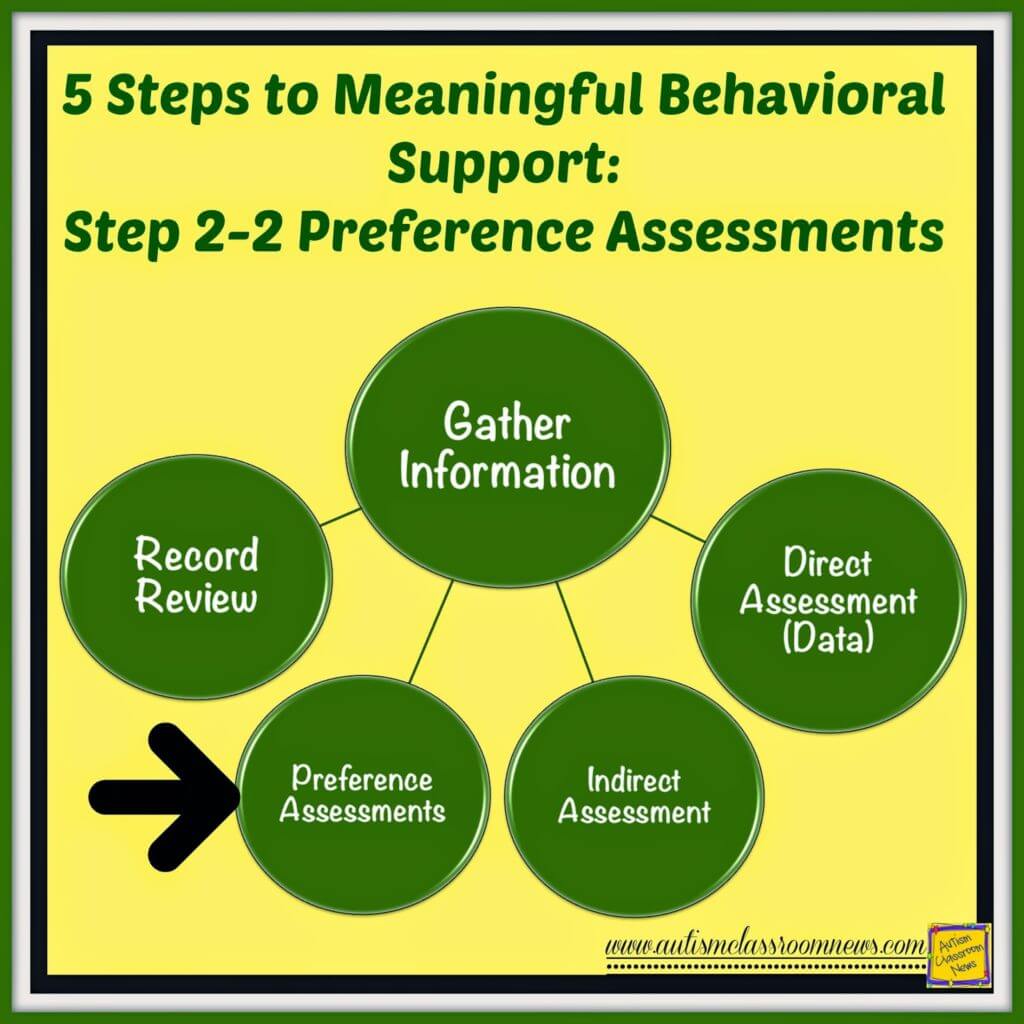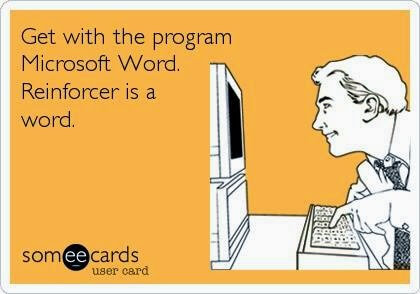Sharing is caring!
To see the other posts in this series, click HERE.
As you review the record to gather information at the beginning of step 2, you might be noting what the individual’s likes and dislikes are and you may have information in his or her file about what types of reinforcers he/she likes. However, as we all know, likes and dislikes can change over time. I wouldn’t have touched a mushroom when I was young, but I just had a mushroom pizza for dinner. Knowing what someone likes can help to identify items or activities that might serve as a reinforcer for appropriate behavior. The more choices we
have of potential reinforcers, the more we can change them up and keep them fresh. In order to figure out what might be a good reinforcer, here are some guidelines and some resources for figuring it out.
Understanding Reinforcement
First, to clearly understand what reinforcement is and for a few reminders that we all forget sometimes about how to use them, please see this earlier post that focused on using reinforcement for teaching new skills. Here we are using them the same way but the skills are new behaviors. Within this, I want to reiterate what was point 4 in that earlier post (just in case you don’t take time to go back and read it). 🙂 If you do not see the behavior that the item/activity follows increase, then the item or activity is NOT a reinforcer. Reinforcers are defined by their effect on behavior. They are more than just something that someone likes.
Reinforcers Change and They Get Old
Just like everything else in the world, too much of a good thing sometimes becomes less good. Reinforcers are no different. Check out this earlier post for ideas about keeping them fresh.
Reinforcers Aren’t the Same for Everyone
Similarly just because I like something doesn’t mean you will. My best example is always sushi. I LOVE sushi. I use sushi as a self-reinforcer (quasi-reinforcer) for myself for accomplishing things. I suppose if I ate enough of it I wouldn’t want it anymore, but it is somewhat hard to imagine. Now, many of you out there are thinking, cool, I like sushi too! For those folks, it might be a reinforcer, but only if your behavior increases. But many others are out there thinking, “Yuck, I hope I never have to have dinner with her! I don’t even like to see sushi, much less eat it!” For those folks sushi is not only not a reinforcer, it’s probably a punisher. It will probably make their behavior decrease if it is followed by sushi enough times. And a few of you might be thinking, “Sushi, I can take it or leave it.” For those folks sushi might be a reinforcer for things that are easier or more enjoyable and don’t need strong reinforcers, but not for the hard stuff that really need super-powerful reinforcers to outweigh how much they aren’t liked!
So How Do We Figure Out What a Reinforcer Might Be
Observation
Sometimes it’s trial and error to figure it out. We observe and notice that a student who is left alone goes and gets a piece of tape off the teacher’s desk. He walks around the room playing with the tape, moving the sticky side from one finger to another. So, you go over to him and take the tape and tell him to follow a simple motor command. If he does it correctly and independently he gets it back. Then we see if the following motor commands increases if we follow it with access to the tape. If it does, then the tape is a reinforcer. If it doesn’t, it’s not. This is a real-life example of a preschooler who loved tape; so once I discovered that he liked it, I went and found all sorts of sticky stuff like goo and sticky frogs you throw at the wall. Then we had lots of sticky stuff that we could rotate and pair with praise to fade out the concrete reinforcers over time, so that the reinforcers didn’t get old. Check out this video from Autism Training Solutions for an example of this. This site has good guidelines about doing mini-reinforcer assessments using this approach.
Formal Assessment:
Another way is to do a formal assessment where you present specific activities in a certain order and see which things actually increase behavior. This type of assessment is a little more formal and typically involves longer periods of time. Jim Wright’s site explains it more fully.
Ask Others
A common method of trying to determine what might serve as a reinforcer is to ask parents and staff what they have observed. The PENT group in CA has a great set of lists-one for children and one for adults. Escambia County has a great send-home form as well. This is an awesome Jackpot Reinforcer Survey Generator that you can customize to the student and have either the student complete it or adults working with the student complete.
Ask the Student
I know, we do so much undercover detective work to figure out functions a behavior, sometimes we forget what is a usual thought–ask the student what he or she want to earn. One way to do that is to use a student survey that just asks the student to identify things he likes. One way to do that is to use a forced choice assessment where the student must choose between 2 types of items / activities. These types of questions are repeated over and over until it’s possible to determine the types of things preferred (e.g., consumable rewards, being admired by peers, academic achievement like getting an A on their paper). This is one where a child indicates what he or she likes. And here in html and here in pdf are forced choice reinforcers that I find really helpful.
And finally I just had to share this cartoon I saw recently on Facebook because throughout this post, Blogger’s autocorrect has been telling me reinforcer is not a word! Aargh!
So hopefully this has given you some tools to figuring out what items or activities might serve as reinforcers for teaching new and more appropriate behaviors. Do you have assessments you use that we could add to the list? Please share in the comments.
Next time we’ll pick up talking about interviews and problem behavior checklists and the pros and cons of using them.
Until next time,











